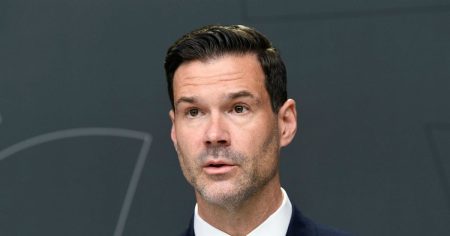The Baltic Sea faces a significant ecological imbalance, a phenomenon often referred to as a ”trophic cascade” by marine biologists. Overfishing and excessive nutrient runoff from agriculture have decimated predator fish populations while simultaneously fostering an explosion in the population of a small, opportunistic fish: the three-spined stickleback. This has created a detrimental feedback loop, exacerbating the effects of eutrophication and leading to less diverse aquatic environments.
The stickleback, now proliferating in vast numbers, wreaks havoc on the ecosystem. They consume the eggs and larvae of predatory fish like pike and perch in shallow spawning grounds, effectively suppressing their populations. Furthermore, sticklebacks feed on small crustaceans that graze on filamentous algae, leading to uncontrolled algal growth in coastal areas. This dense algal cover further hinders the survival of predatory fish and creates an even more favorable environment for sticklebacks, perpetuating the vicious cycle.
However, a glimmer of hope has emerged in the form of an unexpected predator: a larger, predatory version of the Baltic herring. This ”predator herring,” as scientists have dubbed it, shows a remarkable appetite for sticklebacks, potentially offering a natural solution to the Baltic Sea’s ecological woes. Unlike the common Baltic herring, which typically reaches 15-20 centimeters in length, this predatory variant can grow to over 35 centimeters and displays aggressive feeding behavior characteristic of true predatory fish.
Research, including genetic analysis and dietary studies, confirms the distinct nature of these predator herring. At least two genetically distinct populations have been identified, one inhabiting the coastal region north of Gräsö in Uppland up to Söderhamn, and the other ranging from the Stockholm archipelago down to Kalmarsund. These herring represent a new evolutionary branch, transitioning from a plankton-based diet to actively hunting smaller fish, a rapid adaptation considering the Baltic Sea’s relatively young age of approximately 8,000 years. Local fishermen have long recognized these larger herring, referring to them as ”slåttersill” (harvest herring) due to their spawning season coinciding with the hay harvest just before midsummer, and their size comparable to the Atlantic herring found in the southern Baltic Sea.
This discovery of the predator herring’s role in controlling stickleback populations opens up possibilities for restoring the Baltic ecosystem. Protecting these herring becomes paramount, as their predation on sticklebacks can help re-establish the balance between predator and prey fish. Given their preference for coastal habitats where they hunt small fish, researchers emphasize the critical need to move offshore trawling boundaries further out to sea. Large-scale industrial fishing poses a significant threat to these localized herring populations, potentially undermining their crucial role in the ecosystem.
Protecting predator fish populations is essential for maintaining stable ecosystems. The emergence of this predatory herring presents a unique opportunity to naturally regulate the stickleback population and mitigate the damaging effects of eutrophication and overfishing. Implementing protective measures, such as restricting trawling in coastal areas, is vital to ensure the survival of this newly identified predator and its potential to contribute to the Baltic Sea’s recovery. Further research and monitoring will be crucial to continue understanding the complex dynamics of the Baltic ecosystem and refine management strategies to promote its long-term health and resilience. The crucial role of the predator herring highlights the interconnectedness of species within the Baltic Sea and the potential for natural processes to contribute to ecosystem restoration when given the opportunity to flourish.














